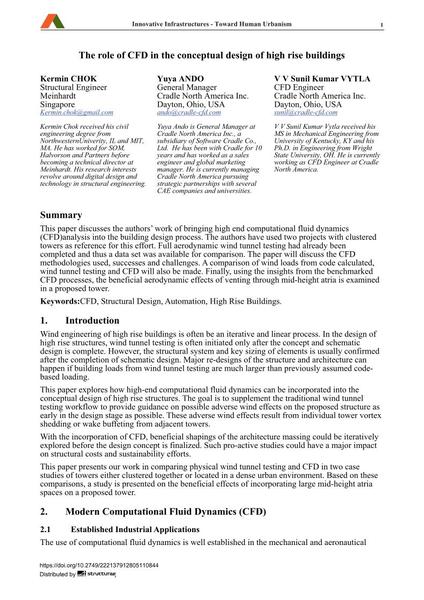The role of CFD in the conceptual design of high rise buildings

|
|
|||||||||||
Détails bibliographiques
| Auteur(s): |
Kermin Chok
Yuya Ando V. V. Sunil Kumar Vytla |
||||
|---|---|---|---|---|---|
| Médium: | papier de conférence | ||||
| Langue(s): | anglais | ||||
| Conférence: | 18th IABSE Congress: Innovative Infrastructures – Towards Human Urbanism, Seoul, Korea, 19-21 September 2012 | ||||
| Publié dans: | IABSE Congress Seoul 2012 | ||||
|
|||||
| Page(s): | 570-578 | ||||
| Nombre total de pages (du PDF): | 9 | ||||
| DOI: | 10.2749/222137912805110844 | ||||
| Abstrait: |
This paper discusses the authors’ work of bringing high end computational fluid dynamics (CFD)analysis into the building design process. The authors have used two projects with clustered towers as reference for this effort. Full aerodynamic wind tunnel testing had already been completed and thus a data set was available for comparison. The paper will discuss the CFD methodologies used, successes and challenges. A comparison of wind loads from code calculated, wind tunnel testing and CFD will also be made. Finally, using the insights from the benchmarked CFD processes, the beneficial aerodynamic effects of venting through mid-height atria is examined in a proposed tower. |
||||
